Chapter 12 Section 3 Binding Forms of Ancient Chinese Books
The evolution of ancient Chinese book binding forms is closely related to the development and changes of book production materials, production methods, ease of reading, and book protection.For example, the binding of oracle bone inscriptions, according to the research of archaeologists, is a method of drilling holes in the middle and connecting them with ropes.This is determined by the characteristics of the oracle bone material.Apart from this, it seems that I can't think of a binding method that is more suitable for this material.After the production of formal books, the materials for making them have changed from bamboo slips, silk and paper; their production methods have changed from handwriting to printing.Therefore, the binding form of formal books also adapts to this change, and has appeared and become popular successively, such as simple books, silk scrolls, paper scrolls, folded books, cyclone books, Vatican folders, butterfly books, back bags, and thread books. , wool clothing and other forms.The formation, popularity and evolution of each form of binding almost have their own different historical or cultural backgrounds.It is an interesting and fascinating subject to explore their evolution laws.
Simplified policy is the meaning of compiling a simplified policy. "Ce" is a borrowed word for "book".In ancient times, some words had sound but no characters, so when writing, we had to rely on the sound and borrow words with the same sound to express them.This phenomenon is called homophonic borrowing in philology, also known as ancient phonetic borrowing. "Book" is a pictographic character, like a bamboo and wood slip worn and woven by rope.Therefore, "Shuowen Jiezi" explained the word "book" and said: "Like its Zha, one is long and the other is short, and there are two editions in it." Yu Fang." Under the word "Ce" in this sentence, two people from different eras gave explanations respectively.One is Zheng Xuan of the Eastern Han Dynasty, he said: "Ce, Jian Ye." The other is Kong Yingda of the Tang Dynasty, he said: "Ce is the name for the connection of all the slips." Zheng Xuan means, "Ce" means bamboo and wood slips; Kong Yingda The meaning of "Ce" is the bamboo and wood slips that are weaved together.Both interpretations are correct, but from different angles.We combine the explanations of these two people, that is, bamboo and wood chips with characters written one by one are called "Jian", and several compendiums are connected together to become "Ce" (volume).It can be seen that Jian Ce really means compiling a simplified policy.
There are two ways for the ancients to compose simplifications: one is a series of single ropes; the other is a combination of two or even four ropes.Liu Xi of the Han Dynasty said in "Shiming": "Zha, comb, weaving it as comb teeth." This means drilling holes on the top of the written bamboo and wood slips, and then stringing them together with ropes.The upper part looks like the back of a comb, while the lower part hangs down like the teeth of a comb.The other is to use hemp rope or silk rope to weave connected bamboo slips like a bamboo curtain.The number of rope weaving depends on the length of bamboo slips.Simply two weaving ropes are enough, and the "Yongyuan Weapons Book" unearthed in Gansu has two weaving ropes (Figure 6).If the two ropes of the long slip are not strong enough, three or four ropes are weaved.For example, the Han bamboo slips of "Yi Li" unearthed in Wuwei, the bamboo slips are three feet long, and the braided ropes are four ways.As for whether to write first and then compile, or to write first and then write, there are two forms.
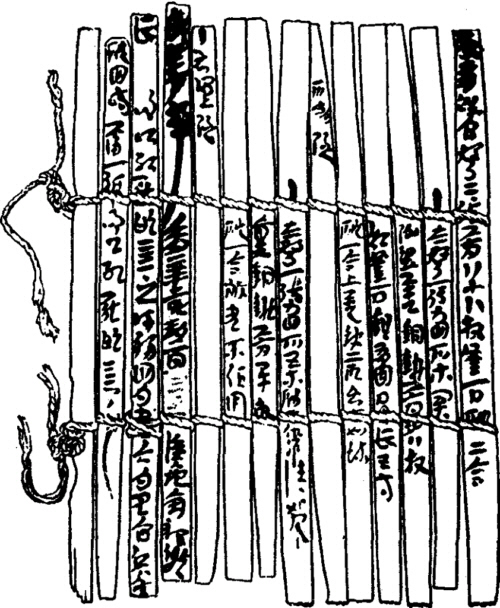
Figure 6 A summary of the Yongyuan Weapons Book of the Eastern Han Dynasty
In order to protect the text from wear and tear, the ancients often compiled a slip without words in front of the text slip, called a superfluous slip.The cover of today's book still bears this superfluous will.The title of the article is often written on the top of the superfluous slips, and the title of the book on the bottom.This is because the ancients wrote books in Jane, and they could not write down without stages. Such a summary is too large to be reviewed and collected, so it is often written into one article after a certain length.And people who use books often have to look up the title of the article first, and then they can find the content they want to search.But ancient books often contain many chapters, for example, there are 22 chapters, and "Mencius" also has seven chapters.Each of the seven chapters will be further divided into upper and lower parts.Such as "Teng Wen Gong Shang", "Teng Wen Gong Xia", "Gongsun Chou Shang", "Gongsun Chou Xia" and so on.If you don't know which article is what you are looking for, you will have no way to start.Therefore, the ancients attached great importance to the title of the article, and wrote the title of the article on the top of the supplementary slips to show it eye-catching.Instead, the title of the book is written at the bottom of the superfluous slips to show the ownership of the title.Although this pattern is a specific form that only adapts to Jian Ce books, it has a profound impact on the form of books in later generations.Until the Song Dynasty when woodblock printing was prevalent, especially the Northern Song Dynasty, titles at the end of volumes were often small titles at the top and major titles at the bottom.This is still the aftertaste of Jian Ce's book layout.
After compiling a compendium of an article, or after compiling a compendium of compendiums, the last compendium is used as the axis and rolled up from the tail to the front like a bamboo curtain. When the "Yongyuan Weapon Book" was unearthed, it kept its original rolled-up form.Some of the medical bamboo slips unearthed from Hantanpo in Wuwei also retain the rolled prototype.In the "Yi Li" bamboo slips of the Han Dynasty unearthed in Wuwei, the chapter titles and chapter numbers are written on the back of the first and second slips, which are just exposed after being rolled up.This also proves that its prototype is rolled up from the tail forward.The rolled Jane needs to be tied up, and then put into a cloth bag or basket box (qieqie).In the Jian Ce unearthed by Juyan, there is a record of "Shu Kai Yi". There is also a saying in "Han Shu Jia Yi Biography" that "the job of vulgar officials lies in knives, pens, baskets and boxes".These cloth bags and baskets full of concise policies are equivalent to "zhi" [zhizhi], and a zhi usually contains 10 volumes.The method of compiling and collecting Jian Ce books is only a specific form adapted to the characteristics of bamboo and wood slips, but it has also had an extremely profound impact on the binding form of books in later generations.The emergence and long-term popularity of silk scrolls and paper scrolls can be said to be an imitation of Jian Ce's roll collection.
Although silk scripts and bamboo slips are made of different materials and have different appearances after completion, they have many similarities in the form of binding.Silk is light and soft, and has strong plasticity.In the form of binding, there are both folds and rolls.Some of the silk scripts unearthed from Mawangdui in Changsha were written on the whole silk, which was difficult to roll up, so they were folded and buried in a lacquer box.Some are written on half-width silk, and a 2.3 cm wide bamboo piece is used as the axis to roll the silk book from the end forward to form a silk scroll. This is probably the prototype of the scroll.
In the Qing Dynasty, there was a famous historian and bibliographer named Zhang Xuecheng.He has a famous book called "Wen Shi Tong Yi".He said in "Wen Shi Tong Yi Pian Juan": "The ancients just wanted to have an order in the words. When writing in the book, there are simple strategies, marking the beginning and the end, which is called chapters." He also said that the Western Han Dynasty The father and son Liu Xiang and Liu Xin were ordered to sort out the national collection of books. "The descriptions are mostly based on chapters and volumes. About the chapters are from the bamboo slips, and the volumes are from the bamboo slips. There is no other meaning. , Qin called Pian, and there were volumes in the Han Dynasty.” The meaning of these two passages is that Pian and Zhang are the measured names of bamboo and wood bamboo slips, and volume is the measured name of silk and silk scripts.Bamboo bamboo slips were popular in the Zhou and Qin Dynasties, so they are often called chapters.After entering the Han Dynasty, silk and silk became popular as books, and volume became a widely used measurement name.Liu Xiang, Liu Xin and his son sorted out the national collection of books, and all the books that had been sorted out and formally transcribed for submission were written in silk.Wu Shuping's "Commentary on Customs Tongyi Collation Lost Article Eleven" said that "Liu Xiang was the Emperor Xiaocheng's collation and correction book for more than 20 years, all of which were first written on bamboo, and then revised and published. Those who can be copied are more than prime." The "shangsu" here , It is copied on silk.So "volume" has become the main unit of measurement.It shows that Zhang Xuecheng's theory that "there are scrolls only after entering the Han Dynasty" is basically in line with the historical reality, and it also proves that the binding form of silk scripts is mainly scrolls.
The use of paper to make books has already begun in the Eastern Han Dynasty.Paper has the lightness and softness of silk, but it is easier to shape than silk.Therefore, after the appearance of paper books, its binding form imitated silk scrolls, and gradually developed into the popular paper scrolls.This can be strongly proved whether it is from document records or physical preservation.
In Fu Xian's "Paper Fu" in the Jin Dynasty, in addition to praising the squareness and whiteness of paper, which is very convenient for writing, he also said that paper "is comfortable when you hold it, and rolls when you let it go."These two sentences are actually a description of the book on the scroll.Paper has a certain degree of elasticity, and it will have the inertia of recycling after being rolled for a long time, so it will be stretched out when you hold it in your hand, but it will be rolled back as soon as you let go.This is an inherent phenomenon of scroll-bound books, and it is also one of the disadvantages of this form of binding.It can be seen that the paper books in the Jin Dynasty were already mounted on scrolls.
Volume 2 of "Continued Biography of Eminent Monks" records that during the reign of Emperor Wen of the Sui Dynasty, there was a monk named Ming Mu Yanzong, who used the Sanskrit scriptures to verify Buddhist scriptures.It is said that in the past, "the scrolls of "Daji" published by Zhitan Luoshi and others mostly consisted of 30 parts."It shows that as early as the Sui Dynasty, the Buddhist "Dajijing" written on paper had been decorated into scrolls.
Volume 38 of "Continued Biography of Eminent Monks" records that Fatai, another monk in the Sui Dynasty, wrote a "Lotus Sutra" diligently himself, which appeared many times, so he took it to Chengdu for decoration. .But it fell into the water while crossing the river, and it was lost later, so "to decorate in Chengdu, use sandalwood as the axis".It can be proved that the books of the Sui Dynasty are not only mounted on scrolls, but also some of the shaft materials used are sandalwood.
Volume 5 of "Continued Biography of Eminent Monks" records that Tang Xuanzang was ordered by the emperor to translate Buddhist scriptures at Daci'en Temple after returning to China from India.After he finished translating and putting it into a scroll, he once wrote to the emperor, asking him to write a preface.He said: "The scriptures and treatises obtained were translated by imperial edict, and they were seen as scrolls without prefaces. Your Majesty Fu Wei thought deeply." It can be seen that the Buddhist scriptures translated by Tang Xuanzang are also bound in the form of scrolls.
Volume 26 of "Continued Biography of Eminent Monks" records that Shamen Xuanlan during the Kaiyuan period of the Tang Dynasty wrote "more than three thousand scrolls of scriptures" by himself.
All of the above are the records of the Tang Dynasty and before the Tang Dynasty on the use of scrolls for paper books.And the records on this aspect after the Tang Dynasty are even more endless in history.Ouyang Xiu of the Northern Song Dynasty said in his "Return to Field Records": "The books collected by the people of the Tang Dynasty are all made of scrolls." "Wen" said: "The ancients collected books, all made scrolls." Gao Shiqi of the Qing Dynasty said in his "Tianlu Shiyu": "The ancients collected books, all made scrolls... This system is still in the Tang Dynasty." From the appearance of paper books until the Tang and Five Dynasties, for about eight or nine hundred years, the prevailing form of book binding was indeed scroll binding.
At the beginning of this century, a large number of suicide notes were discovered in the Sutra Cave of Mogao Grottoes in Dunhuang, mainly handwritten Buddhist scriptures.Now it is collected in various countries around the world, mainly in Britain, France, China, Russia, Japan, India and other countries.A total of about 40,000 pieces.These Dunhuang posthumous writings were produced in the period from the Southern and Northern Dynasties to the Five Dynasties, that is, within the historical span of more than 500 years from 420 to 960 AD.This issue is the peak period of handwritten paper books.Some of these suicide notes are simple scrolls, and some wooden scrolls still exist. The real objects further prove that the binding form of paper books in the Tang and Five Dynasties and before the Tang and Five Dynasties was indeed generally popular scroll binding.
The sizes and specifications of paper in ancient times are not the same.Jin Dynasty paper is about 23-24 cm high and 26-27 cm long; Tang Dynasty paper is 25-26 or 26-27 cm high and 40-43 cm or 44-51 cm long;A book with a long content cannot be accommodated on a single sheet of paper, so I have to finish one sheet and then write the second, third... until the book is finished, there may be several sheets, a dozen sheets, dozens of sheets, or even hundreds of sheets.A book written on several sheets of paper glued together in sequence to form a long strip.The strip can be written first and then glued, or it can be glued first and then written.The finished long paper book can be rolled up from left to right, or from tail to head.In order to prevent the paper roll from being wrinkled or damaged, a round wooden stick is attached to the end of the last paper of the long paper book, and then the stick is used as the axis to roll from left to right, so it is called a scroll.The length of the shaft is slightly longer than the height of the paper, and after the paper book is rolled, the top and bottom ends of the shaft are exposed, which is conducive to the protection of the book (Figure 7).
There also seems to be a distinction between hardcover and paperback for scrolls of ancient books.Simple packaging, only an ordinary round wooden stick is used as a shaft, and some don't even have a shaft, just rolled up from the tail forward, which is also a scroll.Hardcover has different particularities. According to records, Wang Xizhi and Wang Xianzhi wrote better characters in their later years than when they were young.The characters written on silk should be decorated with corals; the characters written on paper should be decorated with metal;It can be seen that some of the scrolls in the Jin Dynasty were quite exquisite.
"Sui Shu·Jingji Zhi" said that after Emperor Yang of Sui came to the throne, the books in the secret pavilion used red glazed scrolls for top grades, cyan (gan dry) glazed scrolls for middle grades, and lacquered scrolls for low grades.It shows that the collection of books of the Sui Dynasty government has been divided into different grades for scroll decoration. "The Six Classics of the Tang Dynasty" records the collection of books of the Tang government. The classic library books use tinned white tooth scrolls, with yellow and red toothpicks; ; Collect library books with a green tooth shaft, and a white toothpick with a red belt.It can be seen that the government collection of books in the Tang Dynasty was not only very particular about mounting scrolls, but also knew how to use colors to classify books.
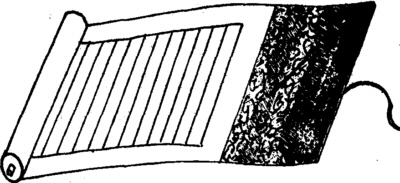
Figure 7 Schematic diagram of reel installation
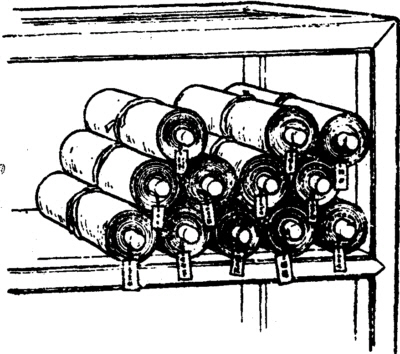
Figure 8 Schematic diagram of the reel rack
In order to protect the content of the book from being defaced, a blank sheet of paper should be pasted on the scroll before the first paper of the main text.The blank paper or silk or silk that is glued on is called "褾" [biao], also called "Baotou" or "Yuchi".There are belts of different materials and colors at the right end of the 褾.The right end of the belt is connected with besiezi of different materials and colors, which are called "signs".The paper is rolled up, and the outermost layer is wrapped around it with a tape, and it is fastened with a sign.The way to store the scroll is to lay it flat on the bookshelf, with one end of the scroll facing outwards, and tie bookmarks of different materials and colors.Write the title and volume number on the label for easy access.When reading books, take out the reel according to the mark on the label, and insert it in situ after use, so it is called an insertion rack (Figure 8).Han Yu, a writer of the Tang Dynasty, said in "Sending Zhuge Jue to Suizhou for Reading Poems" that "Ye Hou's family has many books, 30,000 shafts are placed on the shelves, and toothpicks are hung one by one, and the new ones are as if they have not been touched." A treasure trove of private books with exquisite binding and dazzling collections.
Sutra-folded packaging is also called Zhezizhuang. As the name suggests, it should be named after folding Buddhist scriptures.As mentioned earlier, until the Tang Dynasty, the most popular form of book binding was still scroll binding.But in the Tang Dynasty, the development of Buddhism in China also reached its peak.On the one hand, monks and nuns are everywhere in the region, and on the other hand, translated Buddhist scriptures are generally popular in the form of scrolls.Monks and nuns are everywhere in the domain, which means that the chanting of Buddhist sutras is common; the prevalence of scroll packaging means that it is inconvenient for monks and nuns to chant sutras.Because Buddhist disciples recite scriptures, they must sit in meditation and sit upright to show respect and devotion.It is conceivable that the scrolls are inconvenient for the posture of devout men and women when chanting sutras.Any kind of paper scroll, including Buddhist scripture scrolls, will have difficulty rolling and unwinding after a long time of rolling.Due to the inertia of scrolling for a long time, the scripture scroll will be automatically rolled up from right to left for the part that has been read, and the scripture scroll will be automatically rolled up from left to right for the part that has not been read.In this case, if the position of the ruler is not adjusted in time, the scripture roll will be rolled up from the left and right directions towards the middle.Just imagine, how can such a troublesome and inconvenient scroll-mounted method adapt to the Buddhist disciples' way of reading scriptures in meditation and sitting upright!Therefore, a reformation of the long-popular scrolls first took place on Buddhist scriptures.This is to fold the long scroll of Buddhist scriptures from the beginning to the end according to a certain number of lines or a certain width, and finally form a rectangular stack, and then stick a thick paper cover on the front and back, a new type of binding. Appeared, this is the so-called folding package.Just as revealed by Wu Yan in the Yuan Dynasty and Gao Shiqi in the Qing Dynasty, the emergence of folding scriptures was completely aimed at the disadvantage of the difficulty in loading and unwinding the scrolls.Wu Yan of the Yuan Dynasty said in "Xianjulu": "The ancient books are all scrolls. The difficulty of rolling them is broken, so they are broken. After a long time, they are broken, and they become books again." Gao Shiqi of the Qing Dynasty also said in "Tianlu Shiyu": "The ancients collected books all as scrolls... This system was still in the Tang Dynasty. Later, the scrolls were difficult to stretch, so they were folded. After a long time, they were broken and divided into books and sheets for inspection." These two ancients from different eras revealed The same reason is realized, that is, the folded package is indeed obtained from the modified scroll package.
In 1975, the Chinese University of Hong Kong published "History of Ancient Chinese Books" by Mr. Qian Cunxun, a professor at the University of Chicago in the United States, revealing a folded version of the scriptures. stone chamber.Its binding form is a folded package that is folded from left to right.This is the physical proof of the emergence of Buddhist scriptures in the Tang Dynasty.
In his "Dunhuang Collection of Books", Stein also described the packaging of a Buddhist scripture printed in the Five Dynasties, which is also folded.He said: "There is another small volume of Buddhist scriptures, which is poorly printed...the book is not a scroll, but folded...a folded book, long and continuous, folded...finally, the other end is glued firmly. So unfolded Afterwards, it looks like a modern book. It was written in the second year of Qianyou, that is, 949 A.D.." The object that Stein saw and described showed that the printed Buddhist scriptures were also folded and bound during the Five Dynasties period. style.
In the past book history works, the scripture-folded package was often confused with the Vatican-folded package.Said Sutra folding is also called Vatican folder, or Vatican folder is Sutra folding, or Sutra folding is Vatican folder.In fact, this is a complete misunderstanding.
Sanskrit clip binding is not the binding of ancient Chinese books, but a name given by ancient Chinese to the binding form of Buddhist classics written in Sanskrit on the leaves of Bedouin in ancient India.Sanskrit is the founder of Sanskrit in Tianzhu. "Youlu" Volume 1 "Sanskrit-Chinese Translated Classics have the same sound and meaning difference" said: "In the past, there were three masters who made books: the first name was Fan, whose books ran on the right; Cangjie, whose books are descending. Fan and Kanlou live in Tianzhu, and Huang Shi Cangjie lives in Zhongxia." India is the birthplace of Buddhism, and the Buddhist classics produced in India have been written in Sanskrit on the leaves of Bedouin for a long historical period , so it is also called the Bayeux Sutra.Of course, there are many written on birch bark.
As we said before, the binding form of books can only be adopted according to the materials and production methods of the books.Since the ancient Indian Buddhist scriptures were written with slender and huge Bedok leaves or birch bark, the binding form can only adapt to this material and adopt a corresponding method. This is what the ancient Chinese called the Vatican folder.What is a Vatican folder?If you use the most popular language to explain it, it should be the Buddhist scriptures written in Sanskrit in ancient India on Bedouin leaves or birch bark, and they are bound in a plywood style with ropes.For this form of binding, the ancient Chinese called it Fanjia.In the Sui Dynasty, there was a man named Du Bao, who had a book called "Daye Miscellaneous Notes".Du Bao said in "Daye Miscellaneous Notes" that the "Chengfu Gate" in Luoyang, the eastern capital, is the south gate of the east city. There is Yijin Bridge in Luoshui to the south of the gate, which passes through the Taoist temple. The newly translated scriptures come from foreign countries and use Bedo leaves. Loquat, with thick leaves, is written horizontally in running script. About how many sutras are attached to one side, it is called Fanjia today."Folder originally meant the same book, and later evolved into folder.This description tells us more clearly that the Sanskrit folder is a visual name for the binding form of Sanskrit and Buddhist classics written on the leaves of Beduo trees in ancient India introduced to China by the people of the Sui Dynasty.The specific binding method is to arrange the written Bayeux Sutras according to the order of the scriptures to form a stack, depending on the number of scripture paragraphs and bayou.Then use two scraped bamboo or wooden boards that are slightly wider and longer than the warp leaves to clamp the ordered bay leaf warps one by one, and then pass through one or two holes with the strips.For one hole, tie one end of the rope with a knot before threading the rope, and use the other end to connect the splint and the bay leaf in series; for two holes, use both ends of the rope to connect the splint and the bay leaf in series, and finally tie them up. , even if a Vatican clip-on type is completed.This is what Du Bao said, "As many scriptures as there are, and one side is attached, it will be the same".
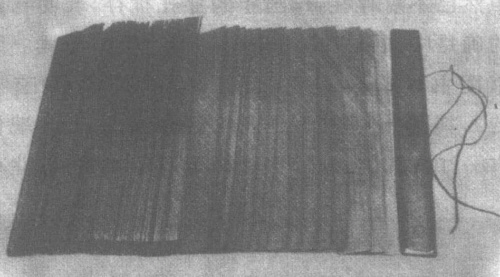
Figure 9 Binding of Bayeux scriptures in Sinhala
It is not only in ancient India that the scriptures are written with the leaves of the Bedo tree, but also among the ethnic minorities in southern China who used the leaves to write the scriptures.The Beijing Library has the Bayeux Sutra in Sinhala (Figure 9), and its binding form is a typical Sanskrit folder.In recent years, the Beijing Library has also collected a batch of Beiye Hinayana scriptures in Dai script, which are also bound in Sanskrit folders.These physical objects also confirm the form characteristics of ancient Indian Vatican folders, thus enriching the binding forms of Chinese books.
China uses paper to make books, and it flourished in the Sui and Tang Dynasties.Books are made of different materials than Bayeux, and of course the way of binding is also different.However, Chinese paper books, including manuscripts and printed books, are also cut into long strips to imitate Bayeux.There are quite a few such posthumous writings in the Chinese Dunhuang posthumous writings now in the Oriental Manuscripts Department of the National Library of England.They are shaped like long strips and shaped like bay leaves. Although the braided ropes no longer exist, the perforations still exist, indicating that they are indeed the binding form of Chinese paper books imitating Vatican folders.The Beijing Library treasures a copy of the Uighur manuscript "Xuanzang Biography" from the Five Dynasties period.Its leaves are narrow and long, running horizontally, with a red circle near each end of each leaf, which is said to be an imitation of the Vatican clip-on style.Among the Dunhuang posthumous books in the Beijing Library, there is a Tang manuscript "Siyi Brahma Sutra" (Fig. 10).Its writing paper is long and strip-shaped, imitating Bayeux.It is a thick volume, but it is perforated in the middle, and it is worn with a single rope. It is a typical Vatican folder in the remains of Chinese paper books.Although one of its splints is missing, the other remains intact.Although most of the strings are lost, there is still a section of the original string running through the leaf and the plywood.The Tibetan and Mongolian Tripitakas engraved until later generations are also made of paper in long strips, horizontally in running script, with a thick splint at the top and bottom, so they are also the binding form of Chinese paper books imitating Sanskrit clips.It's just that this form of binding is not generally popular in China, so it is little known.But whether it is the Sanskrit folders of ancient India, the Sanskrit folders imitated by Chinese paper books, or the Sanskrit folders imitated by ancient books written in Chinese minority languages, they have nothing in common with Sutra folding.Therefore, Sutra-folding is Sutra-folding, and Fanjiazhuang is Fanjiazhuang. The two are neither equal nor interlinked, and should not be confused.
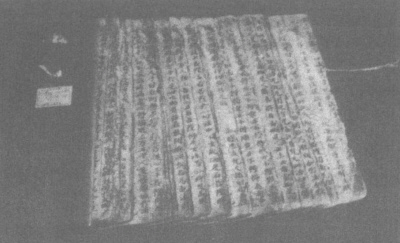
Fig. 10 The paper version of "Siyi Fan Da Suo Jing Jing" written in the Tang Dynasty
For a long time in the past, Chinese and foreign scholars did not have a clear understanding of what is the whirlwind decoration of ancient Chinese books.For a long time, it has been said that the folded package is glued with a whole piece of paper as a whirlwind package, or the scripture package is directly referred to as a whirlwind package, which is an example of this.In fact, the whirlwind outfit has nothing to do with the folded outfit.It is completely different from the cultural background produced by folding.They are two completely different forms of book binding produced in the same era and on the basis of scroll binding due to different social and cultural needs.
The Tang Dynasty was the heyday of my country's feudal society.Great progress has been made in politics, economy, science and culture.Especially in literature, poetry almost occupied the entire literary world, making the Tang Dynasty a golden age for the development of poetry.The development of poetry, especially the development of modern rhythmic poetry, requires strict rhythm on the one hand, and requires elegance and evidence in the choice of words and sentences and the use of anecdotes on the other hand.This prompted the society of the Tang Dynasty to produce and develop works in two aspects: on the one hand, the unprecedented development of books for checking and checking anecdotes; Spreading society.The rhyme books of the Tang Dynasty are similar to the current dictionaries. They have the nature of reference books and are ready for inspection and use at any time.Therefore, the writing method and binding form of such books must be changed accordingly based on the principle of being easy to read at any time.
However, as we said earlier, the most common writing method and binding form of books in the Tang Dynasty were still scrolls with single-sided writing.In this way, there is a great contradiction between the common form of binding and the need for easy review.Continuing to use single-sided writing on scrolls is difficult to solve due to the convenience of checking; breaking through scrolls and adopting a newer form of binding is difficult to create for a while.Therefore, a form of binding that does not completely break the shell of the scroll package but also achieves the purpose of easy inspection, this is the whirlwind package.
In today's world, there are only a few existing Chinese ancient book whirlwind suits.The Tang Dynasty manuscript "Wang Renzhuan's Absurd Supplement and Qieyun" collected by the Palace Museum in Beijing can be said to be a typical physical example of the existing Chinese ancient books.The Tang Dynasty manuscript "Wang Renzhuan Published Absurdity and Filling up Qieyun" in the Forbidden City has five volumes and 24 leaves.Except for the first leaf which is written on one side, the other 23 leaves are written on both sides, so there are 47 sides in total.The binding method is to use a strip of thick paper slightly wider than the book leaves as the bottom, and then stick the book leaves on the bottom paper.The sticking method is, except for the first leaf, which is glued and mounted on the right end of the bottom paper because it is only written on one side, the remaining 23 leaves are all double-sided, so each leaf can only be placed on the right side without a blank strip. , Leaf by leaf to the left, the scales are staggered and mounted on the bottom paper at the end of the first leaf.Therefore, viewed from the left end of the book leaf, it looks like dragon scales.When collecting, it is rolled up from head to tail, or from right to left, and the appearance is still in a scroll style.But when you open it and read it, except that the first leaf cannot be turned because it is completely mounted on the backing paper, the rest can be turned over leaf by leaf to read the text on both sides just like reading modern books.This form of binding not only retains the shell of the scroll, but also solves the contradiction that it must be convenient to check.It can be described as a unique style, which is rare in the world.The ancients called this form of binding "dragon scale decoration" or "whirlwind decoration".
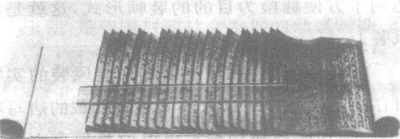
Fig. 11 Binding of the manuscript of Tang Dynasty "Wang Renzhuan Published Absurdity Filling in Missing Qieyun"
Ouyang Xiu of the Northern Song Dynasty said in the second volume of his "Return to the Field": "The books in the Tang Dynasty are all made of scrolls, and there are leaves behind them. Its system is similar to that of today's Cezi. For those who have words for reference, the scrolls are difficult to roll, so the leaves are used. Write it. Such as Wu Cailuan's "Tang Yun", Li He [hehe] "Caixuan" and so on." The Tang manuscript "Wang Renxuan Published Absurdly Filling Up Qieyun" in the Forbidden City (Figure 11) is said to have been written by Wu Cailuan .What Ouyang Xiu saw was probably this kind of thing.He stated the reason for this form of binding, and also described the characteristics of this binding as a curator, but did not say what it was called.
In the early Southern Song Dynasty, Zhang Bangji said in the third volume of his book "Mo Zhuang Manlu": "The name of Wu Cailuan, an ancient immortal in Chengdu, is good at calligraphy. Today, the scriptures of Jiang Yingxiangyuan in the middle of Shu are called the sixteen volumes of "Buddhist Scriptures" in the collection. , is written by Cailuan, and it is also a foreign object. There are still "Tang Yun" passed down in the world today, all of which are whirlwind leaves. The calligraphy and painting are fresh and fresh, and people often have them." It can be seen that Zhang Bangji in the Southern Song Dynasty also saw such things, and he described them as The binding form of this kind of books is called "whirlwind leaf".
Wang Yun of the Yuan Dynasty said in the second volume of his "Jiahua in Yutang": "Wu Cailuan has a regular rhyme with dragon scales, and later Liu Chengxuan said: "Wu Cailuan, known as the immortal in the world. One night book "Tang Yun", namely Buying [yu jade] in the market, people can't predict its meaning. Hearing this, it is rare for his book. After several years of hard work, he was able to obtain this book. Seeing that his spirit is full of ancient times, his pen is powerful, out of nature, and he is not a scholar of ancient and modern times It is within reach. It was dated September 15th in the ninth year of Shi Dahe.' The book has five (five suspected to be two mistakes) fourteen leaves, and the scales are piled up one after the other, leaving paper seams. Tianbao made it in eight years." It can be seen that the Yuan Dynasty king Yun also saw this kind of thing, and what he saw was the one collected by the great calligrapher Liu Gongquan of the Tang Dynasty and wrote the above inscription.Wang Yun described it as "Dragon Scale Kai Yun", "it is the accumulation of scales".It is exactly the same as the binding form of the Tang manuscript "Wang Renxuan Published Absurd Supplements and Qie Yun" in the Forbidden City.
Qian Zeng, a famous book collector in the early Qing Dynasty, also saw such things. "Han Fen Lou Ash Remnant Book Records" quoted him as saying: "Wu Cailuan's "Tang Yun" was written by Yu Jiyin at home in Taixing, and he was making whirlwind leaf scrolls. The decorations are not known today." Qian Zeng What I saw was exactly the same as the binding of "Wang Renxuan Published Absurd Supplements and Qieyun" written by Wu Cailuan in the Forbidden City.He called it the "whirlwind leaf scroll".It can be seen that we call the binding form of the Tang manuscript "Wang Renxuan Published Absolutely Supplementing Qie Yun" in the Forbidden City the whirlwind decoration, which is witnessed by many ancient people.
Considering the image characteristics of the whirlwind in nature, it is also a spiral rotating wind formed by the low air pressure in a certain place and the surrounding air pouring into one place. Among them, the big and strong one is the tornado.The characteristic of this kind of wind is that the air rotates in one direction back and forth in several layers.Its three-dimensional image is like a number of reed mats rolled up with scales, like a cylinder.The Tang Dynasty manuscript "Wang Renzhuan Published Absurdity and Filling the Rhythm" in the Forbidden City has a binding form in which the book leaves are scattered and piled up in one direction, and the outer shell retains the layout of the scroll.After the binding is completed and rolled up, the book leaves inside are like a whirlwind in which the air is divided into several layers and rotates in one direction.Therefore, we believe that this form is the whirlwind of ancient Chinese books.It is not a package that is folded and glued to a whole piece of paper to become a whirlwind package, let alone a package that is folded and packaged is also called a whirlwind package.The whirlwind has its own independent form, but it doesn't completely get rid of the constraints of the scroll.It is an improvement to the reel packaging, and it is a transitional form during the conversion process from the reel packaging to the leaf packaging.The folded package is a complete transformation of the roll package, which has transitioned from the roll package to the leaflet package.In this sense, the whirlwind outfit appeared earlier than the folded outfit.
my country already had woodblock printing in the Tang Dynasty.During the Five Dynasties, the Nine Classics were engraved and printed by the government.After the unification of the Song Dynasty, the engraving and printing industry achieved unprecedented development.This huge change in the way books are produced will inevitably lead to corresponding changes in the form of book binding.Qian Zeng, a famous bibliophile in the early Qing Dynasty, once sighed in his "Shu Min Qiu Ji": "Since the Northern Song Dynasty, the books published in the world have been published, but the decoration skills are excellent." profound effects of change.
After the Northern Song Dynasty, the book production method was mainly engraving and printing.Block printed books differ from handwritten books in many ways.Handwritten books can be written in succession without dividing any paragraphs, and you can cut it as long as you want.Engraving is not enough, it must divide a book into several editions, and engrave and print each edition, so the printed book is actually a number of single leaves with the edition as the unit.What kind of binding form should be adopted for these printed leaves?Do you glue them end to end and still have them on a reel, or do you do something else?This was a problem that binding workers had to seriously consider and solve at that time.Continuing to adopt the existing scroll-mounted, warp-folded, and whirlwind-mounted types will not only waste the procedures of adhesion and folding, but will also not adapt to the needs of a more developed social culture.So a new form of binding - the butterfly suit appeared.
Butterfly dress is also referred to simply as butterfly dress.The specific method of this kind of binding is to fold each printed book leaf in half with the center of the plate as the center seam and the printed side as the standard.Then collect the leaves into a stack, and poke the folded edge to the right to form the spine, and then use paste to stick to each other leaf by leaf at the spine.Then prepare a piece of thicker whole paper the same size as a book leaf, fold it in half from the middle to make a crease that is the same thickness as the book, and stick it on the spine of the book that has been pasted with paste as the front and back covers.Finally, trim the left and right margins, and the binding of a butterfly-bound book is complete.This form of binding, from the outside, is very similar to the current paperback book. When it is opened, the center of the page looks like the body of a butterfly in the center, and the leaves of the book are like the wings of a butterfly spreading to both sides. It looks like a butterfly spreading its wings and flying, so it is called a butterfly book 12).
Butterfly packaging adapts to the characteristics of one page and one leaf of printed books, and the text faces inward, and the center of the book is set on the spine, which is beneficial to protect the text inside the box.If the upper, lower, and left sides face outward, they are all the margins outside the frame, and it is easy to repair if it is worn out.At the same time, there are no threading needle holes and paper twisting holes, so it will not be damaged when reinstalling.Because of its advantages, this form of binding has been popular for more than 300 years in the Song and Yuan dynasties. "Ming History·Yiwenzhi Preface" shows that the books in the Chaomi Pavilion are all the relics of the Song and Yuan dynasties, and they are all exquisite.They are "folded upside down and outwardly turned around, and insects and mice cannot damage them." The so-called "folded upside down, outwardly turned around" here refers to butterfly clothes.Moreover, it is "a legacy of the Song and Yuan Dynasties", which shows that during the Song and Yuan Dynasties, butterfly binding was indeed a popular form of book binding.
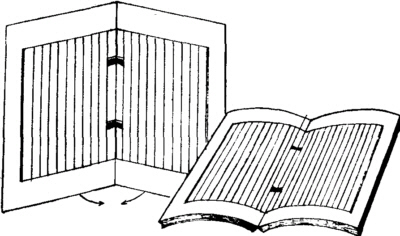
Figure 12 Schematic diagram of a butterfly outfit
The advantages of the butterfly outfit are as mentioned above, but like any other things, while fully displaying its advantages, it often exposes its own weaknesses.The leaves of the butterfly book are reflexed, and the characters on the upper and lower halves face each other, which is undoubtedly good for protecting the characters in the frame.But this kind of binding makes all the leaves of the book are single leaves. Not only does the first thing you see when you look at a page is the reverse side without words, but it is also easy to cause the front sides with words on the upper and lower half leaves to be connected to each other. Extremely inconvenient.Moreover, the spine of the butterfly-bound book is all glued with paste. This kind of binding can be used as a long-term book collection. If it is read frequently, it is extremely easy to get scattered.Aiming at these weaknesses of butterfly packaging, a new form of binding that is easy to read and more secure has emerged, which is the backpack packaging (Figure 13).
The characteristic of the back pack is that it reverses the method of folding the book leaves upside down, and folds the printed book leaves forward, so that the folded edge where the core of the edition is located is facing left and outward, so that the text faces people.The rest of the left and right sides of the book leaf are aligned to the right and integrated into the spine because the book leaf is folded straight.The dozens of folded book leaves are arranged in order, and then the folded edge facing the left is used as the standard to stamp and press firmly.Then drill holes on the remaining panel on the right, and use paper twist to stitch up and flatten.裁齐右边余幅边沿,再用一张硬厚整纸,比试书脊的厚度,双痕对折,做成封皮,用浆糊粘于书脊,把书背全部包裹起来。剪齐天头地脚及封皮左边。一册包背装的书籍就算装帧完毕了。这种装帧由于主要是包裹书背,所以称为包背装。
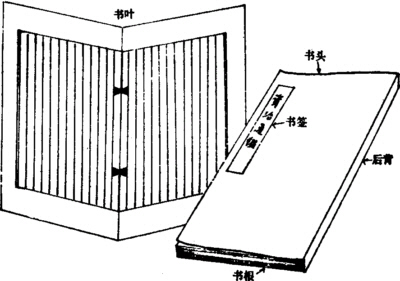
图13 包背装示意图
包背装大约出现在南宋,经元历明,一直到清朝末年,也流行了几百年。特别是这一时期政府的官书,几乎都是包背装。其实古书的包背装,很像现代的平、精装书。所不同者,包背装的书叶是单面印刷,合页装订;现在的平精装书是双面印刷,折配装订。包背装是在书脊内侧竖订纸捻以固定书叶;平精装书则是在书脊上横向索线以固定书叶。从外表看,两者没有多大区别。包背装解决了蝴蝶装开卷就是无字反面及装订不牢的弊病。但因这种装帧仍是以纸捻装订,包裹书背,因此也还只是便于收藏,经不起反复翻阅。若是经常翻阅,仍然很容易散乱。为了解决这个问题,一种新的装订办法又慢慢出现并逐渐盛行起来,这就是线装。
用线来装订书籍,具体始于何时,很难详考。过去通常的说法是,线装书籍的装帧形式出现在明朝中叶以后,这是很不确切的。现存于英国国家图书馆东方手稿部的中国敦煌遗书中,有几件唐末五代时期的遗籍,也有少数北宋初年的遗籍。这些遗书的装订办法,有的是在书脊上端用线横索书背;有的在书脊内侧上下端各打一透眼,然后用线绳横索书背后,再连穿下端透眼横索书脊,最后系扣打结;有的在书脊内侧上中下打三个透眼,然后逐一横索书脊,竖向连穿,最后在中间打结系扣。有的订线仍在,装式完整;有的订线虽佚,但穿孔犹存。这说明唐末五代,一直到北宋初年,曾经出现过用线装订书籍的方法,但由于后来蝴蝶装的盛行,又淘汰了这种装帧形式。南宋初年的张邦基在他的《墨庄漫录》卷四中记载了一段北宋王洙〔zhu朱〕的议论。王洙说做书册以粘连成册最好。这种装帧如果是散乱了,也好寻其次第,予以恢复。以前所得旧籍,都赖此而凑全。如果书叶是用线缝缋〔hui会〕而成册,时间一长,缝线断烂,就很难恢复次序。早先曾得到过数册董仲舒的《春秋繁露》,书叶颠倒错乱,经一年多认真顺读,才恢复了次序。这就是用线装订书册的弊病。这段议论说明北宋前期也还有用线装订书册的办法。但由于当时又出现了粘叶成册的蝴蝶装,所以北宋人两相比较的结果,认为蝴蝶装优于线装,因而扬弃了用线装订书籍的形式,使唐末五代就已出现的线装办法中断了。
明朝中叶以后,社会文化更加发展。特别是伴随着资本主义萌芽,市民阶层的精神文化生活也日益提高,书籍的流通翻阅也更加频繁。因此,书籍的装帧形式也要适应这种需要而作相应的改变。蝴蝶装的不便早已暴露,包背装仍然承担不起经常的翻阅,容易散裂的状况,也早已为更多的人所知晓,所以线装书籍便又重新兴盛起来。
线装与包背装在折叶方面没有任何区别,只是装订时不先用纸捻固定书叶,也不用整纸包裹书背而作封面。而是将封皮纸裁成与书叶大小相一致的两张,前一张后一张,与书叶同时戳齐,再将天头地脚及右边剪齐,用重物压稳固定,最后打眼穿线装订。明代中叶以后流行起来的线装书籍,其装帧形式,不是唐末五代时线装形式的简单重复,而是在折叶、配封皮、打眼、装订等方面,又有大胆革新。现在我们仍能见到的大量的古籍线装书,都是四眼装订的形式。这种形式便是在明、清两代定型的。这种装帧形式,在我国书籍传统装帧技术史上是集大成者,是最进步的。它既便于翻阅,又不易破散;既有美观的外形,又很坚固实用,所以它流行的时间也有几百年(图14)。直到今天,若是用毛边纸、宣纸影印古籍,其装帧还常常采用这种方式。看上去古朴典雅,庄重大方。
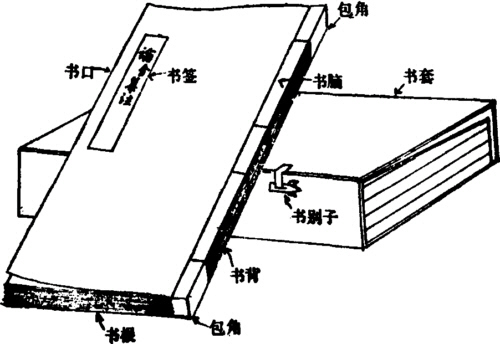
图14 线装示意图
在流通的古籍中,毛装不能算是一种独立的装帧形式。既考不清其出现的具体时代,也说不清其慢慢消失的时间。但在实际中又确实存在着毛装这种形式。毛装形式的特点,在折叶方法上与包背装、线装没有任何区别。即仍然是以版心为轴线,合叶折叠。集数叶为一叠,戳齐书口,然后在书脊内侧打两眼或打四眼,用纸捻穿订,砸平。天头地脚及书脊毛茬自任,不用裁齐。也不用装封皮。这种毛茬参差而又纸捻粗装不要封皮的装帧形式,就叫作毛装。
现知毛装书通常在两种情况下出现:一种是官刻书,特别是清代内府武英殿刻的书,通常都要送给满族人的发祥地沈阳故宫、各王府、有功之臣或封疆大吏。这种书送去之后,不知得主珍重程度,更不知人家打算装配什么质地的封皮,所以就毛装发送。辽宁省图书馆珍藏不少原沈阳故宫所得殿版书,其中不少还是当初清朝内府武英殿的毛装。宁波范氏天一阁,在《四库全书》编纂过程中进书有功。乾隆皇帝为了嘉奖范氏天一阁的献书赤诚,下令将雍正时内府用铜活字排印的《古今图书集成》送给天一阁一部。天一阁得到此书后,专门做了几个大书橱,将此书庋藏在宝书楼上。直到今天,你若登上天一阁的宝书楼,还能看到这部书。你若有这方面的兴趣,注意一下它的装帧,你就会发现它还是260多年前清朝内府的毛装。
还有一种情况就是手稿,特别是草稿,作者写到一章一节,为不使其页码章节错乱,也常常自己把它装订起来。有用线订的,也有用纸捻订的。毛毛草草,边缘参差,所以也称为毛装。这种情况,在清代乃至民国初年,在文人学士中还常常出现。甚至鲁迅、陈垣先生的手稿,也曾采用过这种毛装的形式。

Figure 6 A summary of the Yongyuan Weapons Book of the Eastern Han Dynasty

Figure 7 Schematic diagram of reel installation

Figure 8 Schematic diagram of the reel rack

Figure 9 Binding of Bayeux scriptures in Sinhala

Fig. 10 The paper version of "Siyi Fan Da Suo Jing Jing" written in the Tang Dynasty

Fig. 11 Binding of the manuscript of Tang Dynasty "Wang Renzhuan Published Absurdity Filling in Missing Qieyun"

Figure 12 Schematic diagram of a butterfly outfit

图13 包背装示意图

图14 线装示意图
